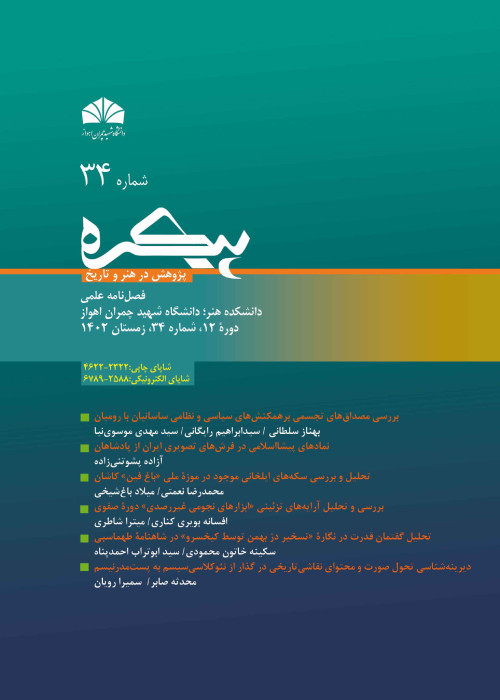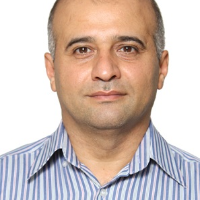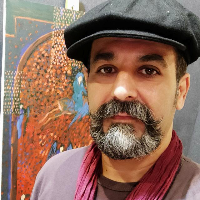A Comparative Study of Power in the Paintings of Iran Darudi and the Plays of Heiner Muller
Problem Definition:
The paintings of «Iran Darroudi» and the plays of «Heiner Muller» apply contradictory viewpoints and literary imageries to discuss the concept of power as an artistic force independent from any political ideology, while affected by the audience's internal and social understanding. Darudi uses indefinite colors and shapes, while Muller violates conventional acts and theatrical scenes in order to make challenge for the audience as a subject who is supposed to perform an active role in the discourse of power. These works do not make any judgment and do not give any definite message in order to put stereotypes under question and suspend the association of binary oppositions such as woman/inactivity, power/domination, past/present. The audience faces the challenge between existence and nothingness, which alters the frameworks of ideological domination and redefines the concept of power. Now, the major problem is that how different layers of meaning and which elements in form signify the concept of power.
The primary aim of this article is to compare and study the common aspects of power in the plays of Heiner Muller and the paintings of Iran Darudi.
This essay is based on a library research which collected data about "the concept of power" in the selected works to make a comparative study through a descriptive-analytic method. Two sample works are randomly selected and analyzed for each outstanding artist including: Muller's «Hamletmachine and Medea Material» and Darudi's «The Earth's Veins» and «The Revolt of Desert».
The comparison between the paintings of Iran Darudi and the plays of Heiner Muller signifies a common mechanism called subject-object permutation that develops the absolute meaning of «power» to a dynamic concept. The subversion of subject transposes the status of audience from a mere observer or an object to an inevitable subject who starts participating in the artistic discourse. Deconstruction of form leads to blending different styles in a way that they are not bound to any definite ideology. The selected works give a different interpretation of contradictory concepts such as woman/man, ontology/patriotism, development/originality and subject/object so that they reverse the dominant viewpoint.
- حق عضویت دریافتی صرف حمایت از نشریات عضو و نگهداری، تکمیل و توسعه مگیران میشود.
- پرداخت حق اشتراک و دانلود مقالات اجازه بازنشر آن در سایر رسانههای چاپی و دیجیتال را به کاربر نمیدهد.




